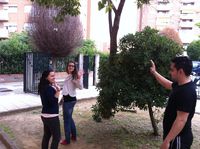What is Formal communication?
Formal communication refers to the flow of official information through proper, predefined channels and routes. The flow of information is controlled and needs deliberate effort to be properly communicated. Formal communication follows a hierarchical structure and chain of command. The structure is typically top down, from leaders in various departments and senior staff in the organization, which funnel down to lower level employees. Employees are bound to follow formal communication channels while performing their duties.
What is Informal communication?
Informal communication refers to communication which is multi-dimensional. Informal communication moves freely within the organization and is not bound by pre-defined channels and communication routes. Informal communication is particularly quick. Informal communication is far more relational than formal communication and is by nature, a very natural form of communication as people interact with each other freely and can talk about a diverse range of topics, often extending outside of their work duties. Due to the inherent nature of informal communication, it moves a lot faster and does not have a paper trail.
Informal communication in the workplace is often called the ‘grapevine’ and generally begins with employees through social relations. In many cases informal communications can turn to formal communication if they are added in to the formal communication information flow of a company.
Informal communication is considered effective as employees can discuss work-related issues which saves the organization time and money. It also helps to build more productive and healthy relationships in the workforce planning.
 Eva has spent the whole morning walking around the different departments in the company and she has known a lot of workers. Now, It's time for lunch and some of her colleagues ask her to go together to the small canteen next to the office. Eva is really nervous since she is in a real English company speaking English with real English people!
Eva has spent the whole morning walking around the different departments in the company and she has known a lot of workers. Now, It's time for lunch and some of her colleagues ask her to go together to the small canteen next to the office. Eva is really nervous since she is in a real English company speaking English with real English people!